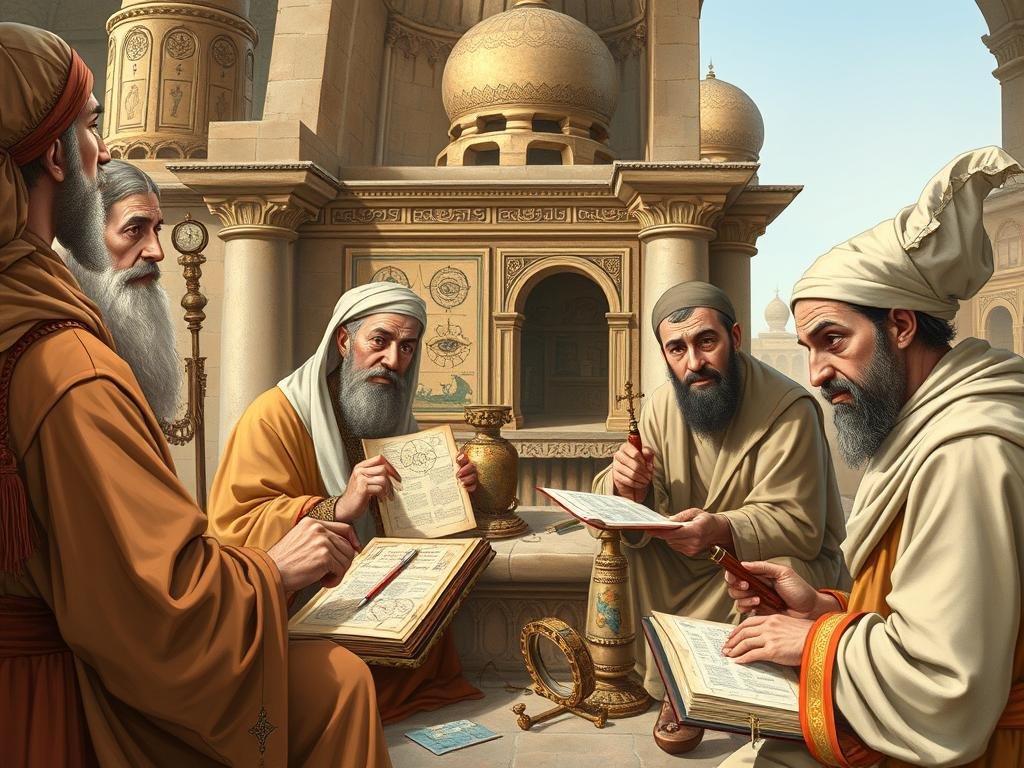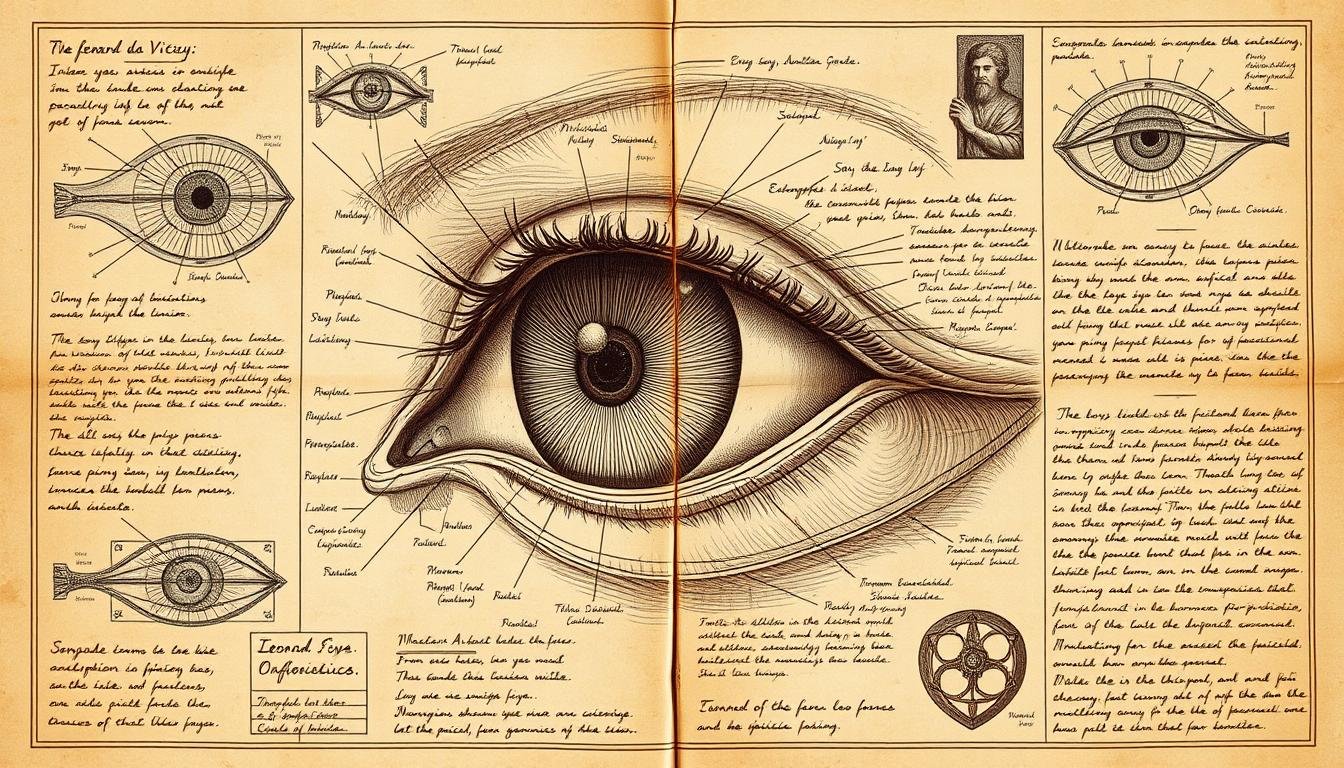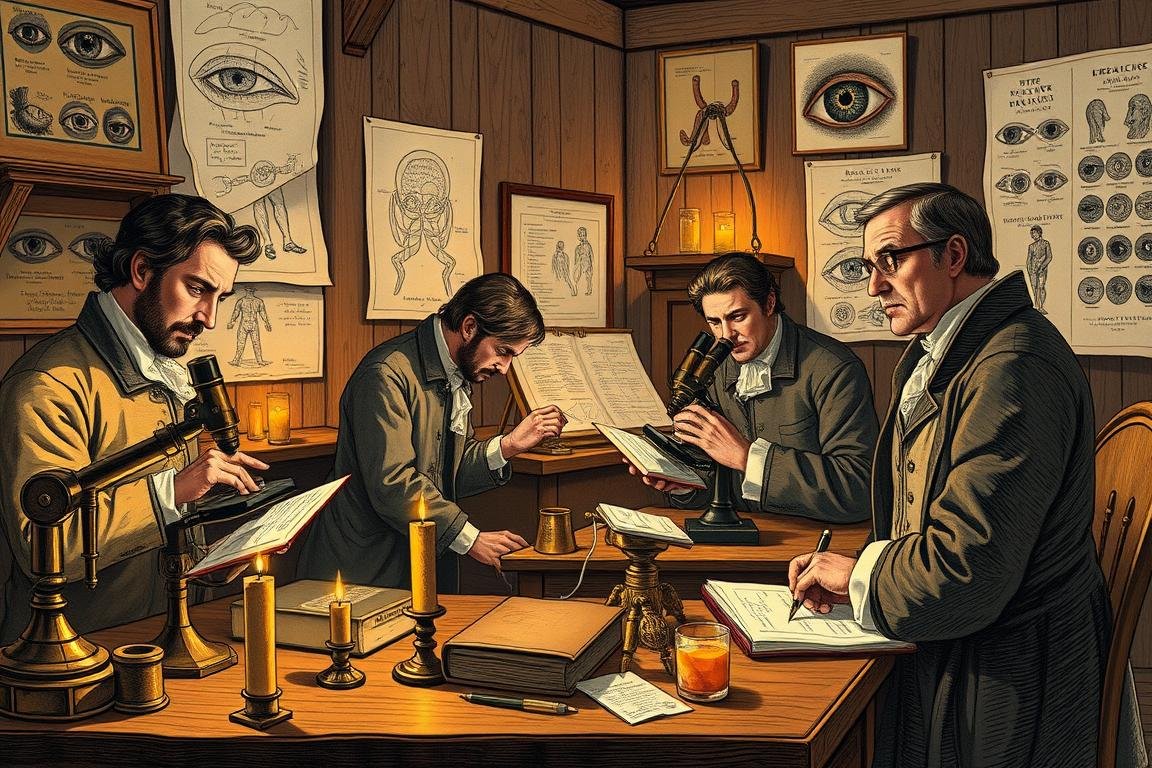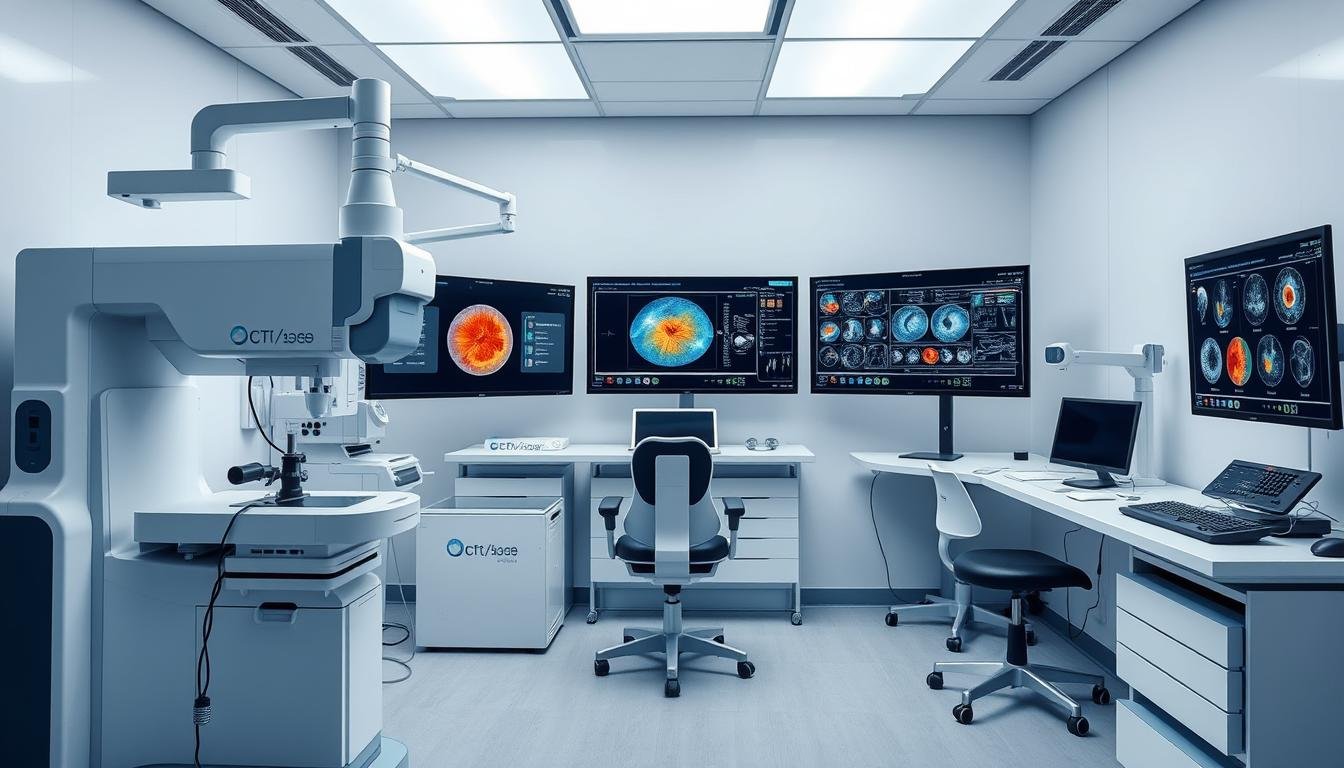The human eye has captivated scientists, physicians, and philosophers for millennia. This remarkable sensory organ, with its intricate structures and profound connection to the brain, represents one of the most fascinating subjects in medical history. From ancient civilizations’ rudimentary understanding to today’s advanced imaging technologies, the study of eyes reveals humanity’s enduring quest to understand vision and treat ocular disorders.
This comprehensive exploration traces how our understanding of the eye has evolved across civilizations and eras, highlighting pivotal discoveries that revolutionized ophthalmology and vision science. Join us on this journey through time as we examine how the study of eyes has shaped our understanding of human perception and advanced medical care.
The Ancient Study of Eyes: From Egypt to Greece
The earliest documented study of eyes dates back to ancient Egypt around 2500 BCE. The Edwin Smith Papyrus and Ebers Papyrus contain some of the first written records of eye conditions and treatments. Egyptian physicians recognized various eye diseases and developed remedies using minerals, plants, and animal products. They also created specialized tools for eye examinations, demonstrating a sophisticated understanding of ocular health for their time.
The Eye of Horus: Symbolism in Early Eye Medicine
The Eye of Horus, a powerful ancient Egyptian symbol, represented protection, royal power, and good health. This iconic imagery influenced early medical practices and reflected the cultural significance of eyes in Egyptian society. Priests and physicians often invoked this symbol during healing rituals related to vision disorders, creating an intriguing blend of spirituality and primitive medical practice in the study of eyes.
Greek Contributions to Ocular Understanding
The ancient Greeks significantly advanced the study of eyes through more systematic observation and theoretical frameworks. Hippocrates (460-370 BCE), the father of medicine, described various eye conditions and their treatments. Aristotle (384-322 BCE) conducted detailed studies of eye anatomy and proposed theories about vision, suggesting that objects emitted “forms” that entered the eye.
Later, the Greek physician Galen (129-216 CE) developed more accurate anatomical descriptions of the eye, identifying structures like the retina, cornea, iris, and lens. Though some of his theories were incorrect, his work formed the foundation of ocular understanding for over a millennium.
Explore Ancient Medical Practices
Discover how ancient civilizations understood and treated eye conditions with our comprehensive historical guide.
Download Ancient Eye Medicine Guide
Medieval Advances in the Study of Eyes

While Europe experienced the Dark Ages, the Islamic world preserved and expanded upon Greek and Roman knowledge. The medieval period saw remarkable advancements in the study of eyes through the contributions of Islamic scholars who translated, preserved, and expanded upon classical works.
Ibn al-Haytham and the Revolution in Optical Science
Ibn al-Haytham (965-1040 CE), known in the West as Alhazen, revolutionized the study of eyes with his groundbreaking “Book of Optics.” He rejected the Greek emission theory of vision and correctly proposed that vision occurs when light reflects from objects and enters the eye. His experiments with light, reflection, and refraction established the foundation for modern optical science.
Al-Haytham also provided detailed descriptions of eye anatomy, including the first accurate depiction of the optical system. His work represented a crucial shift from philosophical speculation to empirical investigation in the study of eyes.
Contributions of Other Islamic Scholars
Other notable Islamic physicians advanced ocular medicine during this period. Ali ibn Isa (940-1010 CE) wrote the “Memorandum Book for Oculists,” describing over 130 eye diseases and their treatments. Ammar ibn Ali al-Mawsili invented the hollow needle for cataract surgery, a revolutionary technique that improved upon earlier methods.
These medieval Islamic contributions preserved classical knowledge and significantly expanded the understanding of eye anatomy, function, and treatment, bridging ancient knowledge to the Renaissance period.
The Renaissance: Revolutionizing the Study of Eyes

The Renaissance period (14th-17th centuries) marked a transformative era in the study of eyes. The revival of classical learning combined with new approaches to scientific inquiry led to unprecedented advances in understanding ocular anatomy and function.
Leonardo da Vinci’s Ocular Investigations
Leonardo da Vinci (1452-1519) made remarkable contributions to the study of eyes through his detailed anatomical drawings and experiments. His investigations into the camera obscura helped him understand how images form on the retina. Da Vinci’s notebooks contain precise illustrations of ocular structures and theories about accommodation, the pupillary light reflex, and binocular vision.
Vesalius and Anatomical Revolution
Andreas Vesalius (1514-1564) challenged Galenic traditions with his groundbreaking work “De Humani Corporis Fabrica,” which included detailed anatomical studies of the eye based on human dissections. His accurate depictions corrected many longstanding misconceptions and established a new standard for anatomical illustration in the study of eyes.
The Invention of Eyeglasses and Early Optical Instruments
The Renaissance period saw practical applications of optical knowledge with the refinement of eyeglasses, first invented in the late 13th century. By the 16th century, various lens types were available to correct different vision problems. These developments reflected growing understanding of refractive errors and the optical properties of the eye.
The invention of the microscope by Dutch spectacle makers in the late 16th century would later enable unprecedented examination of ocular microstructures, opening new frontiers in the study of eyes.
Deepen Your Historical Knowledge
Access our comprehensive timeline of eye study advancements from ancient times to the present day.
Download Complete Timeline
The Enlightenment Era: Scientific Method in the Study of Eyes

The 17th and 18th centuries brought systematic application of the scientific method to the study of eyes. This period saw fundamental discoveries about the nature of light, vision, and ocular anatomy that formed the foundation of modern ophthalmology.
Kepler’s Optical Breakthrough
Johannes Kepler (1571-1630) made a crucial breakthrough in understanding vision by correctly describing how the eye forms an inverted image on the retina. His work “Ad Vitellionem Paralipomena” (1604) explained accommodation and provided the first accurate model of the optical system of the eye, representing a pivotal moment in the study of eyes.
Microscopic Revelations of Eye Structure
Antoni van Leeuwenhoek (1632-1723) and others used improved microscopes to examine eye tissues in unprecedented detail. These investigations revealed previously invisible structures and cell types, dramatically expanding knowledge of ocular microanatomy and laying groundwork for future histological studies.
In 1722, Antonie van Leeuwenhoek provided the first description of the lens fibers, while in 1741, Nicolas Le Cat described the retinal blood vessels, adding crucial details to the growing body of knowledge in the study of eyes.
Early Theories of Color Vision
Isaac Newton’s experiments with prisms demonstrated that white light comprises a spectrum of colors. His work “Opticks” (1704) influenced early theories of color vision and perception. Later, Thomas Young (1773-1829) proposed the trichromatic theory of color vision, suggesting three types of color receptors in the eye—a remarkably accurate insight that would be confirmed much later.
Modern Scientific Study of Eyes: 19th to 21st Century

The 19th century marked the beginning of modern ophthalmology, with unprecedented advances in the study of eyes through new technologies, research methodologies, and clinical approaches. This era established ophthalmology as a distinct medical specialty and laid the groundwork for today’s understanding of vision science.
Hermann von Helmholtz and the Study of Eyes
Hermann von Helmholtz (1821-1894) made revolutionary contributions to the study of eyes with his invention of the ophthalmoscope in 1851, allowing physicians to examine the living retina for the first time. His three-volume “Handbook of Physiological Optics” established the foundation for modern vision science, covering topics from the physics of light to color perception and binocular vision.
Helmholtz also refined the understanding of accommodation, showing how the lens changes shape to focus on objects at different distances. His work exemplified the integration of physics, physiology, and medicine in advancing the study of eyes.
Cellular and Molecular Understanding
The late 19th and early 20th centuries saw rapid advances in understanding the cellular and later molecular basis of eye function. Santiago Ramón y Cajal’s detailed studies of retinal neurons in the 1890s revealed the complex neural architecture of the visual system. The discovery of rhodopsin by Franz Boll and Willy Kühne in 1876-1878 began to explain the biochemical basis of light detection.
George Wald’s Nobel Prize-winning work in the 1930s-1950s elucidated the role of vitamin A in vision and the molecular mechanisms of photoreception, representing a quantum leap in the study of eyes at the biochemical level.
Optical Technologies in the Study of Eyes
The 20th century witnessed an explosion of technologies that transformed the study of eyes. The slit lamp biomicroscope, developed by Allvar Gullstrand in the early 1900s, enabled detailed examination of ocular structures. Fluorescein angiography, introduced in the 1960s, allowed visualization of retinal blood flow. Optical coherence tomography, developed in the 1990s, provided unprecedented cross-sectional imaging of retinal layers.
These technologies, along with advances in laser surgery, genetic testing, and computational modeling, have revolutionized both research and clinical practice in ophthalmology, enabling earlier diagnosis and more effective treatments for eye conditions.
Expand Your Knowledge
Register for our upcoming webinar on the latest advancements in ophthalmological techniques and research.
Register for Webinar
Contemporary Approaches to the Study of Eyes

Today’s study of eyes integrates multiple scientific disciplines, from genetics and molecular biology to artificial intelligence and bioengineering. This interdisciplinary approach has accelerated understanding of ocular function and disease while opening new frontiers in treatment and vision enhancement.
Genetic and Molecular Revolution
The mapping of the human genome has transformed the study of eyes by identifying genes associated with various eye conditions. Researchers have discovered hundreds of genes linked to disorders like retinitis pigmentosa, glaucoma, and age-related macular degeneration. This genetic understanding has enabled new diagnostic approaches and targeted therapies.
CRISPR gene editing technology represents one of the most promising frontiers, with clinical trials underway for genetic eye diseases previously considered untreatable. These advances exemplify how molecular techniques have revolutionized the study of eyes and treatment possibilities.
Artificial Intelligence and Big Data
Artificial intelligence has emerged as a powerful tool in the study of eyes. Machine learning algorithms can now analyze retinal images to detect conditions like diabetic retinopathy with accuracy rivaling human specialists. These systems process vast datasets to identify subtle patterns invisible to the human observer.
Big data approaches integrate clinical, genetic, and imaging information to develop predictive models for disease progression and treatment response. These computational methods are transforming both research methodologies and clinical practice in ophthalmology.
Regenerative Medicine and Bioengineering
Stem cell therapies represent a revolutionary approach in the study of eyes, with the potential to replace damaged tissues. Clinical trials using retinal pigment epithelium derived from stem cells have shown promising results for conditions like age-related macular degeneration.
Bioengineered corneas, 3D-printed ocular tissues, and artificial retinas exemplify how engineering approaches are creating new possibilities for restoring vision. These technologies bridge fundamental research and clinical application, demonstrating the increasingly translational nature of modern eye research.
“The eye is the window not only to the soul but to our overall health. Modern research has revealed how ocular biomarkers can predict systemic conditions, making the study of eyes more relevant than ever to preventive medicine and personalized healthcare.”
– Dr. Emily Chen, Vision Research Institute
The Continuing Evolution of Eye Research

The study of eyes has evolved from ancient observations to today’s molecular and digital investigations, yet it remains a field of continuous discovery. Each era has built upon previous knowledge while introducing revolutionary new concepts and technologies. This historical progression demonstrates how scientific understanding advances through both incremental improvements and paradigm-shifting breakthroughs.
Looking forward, emerging technologies like optogenetics, quantum imaging, and nanotechnology promise to further transform the study of eyes. The integration of virtual reality, augmented reality, and brain-computer interfaces may redefine our understanding of vision beyond the traditional boundaries of ocular function.
As we continue this journey of discovery, the study of eyes remains a testament to human curiosity and ingenuity—a field where ancient wisdom and cutting-edge science converge to illuminate one of our most precious senses.
Continue Your Exploration
Access our comprehensive library of resources on eye anatomy, function, and the latest research developments.
Explore Our Resource Library
Additional Resources for Eye Research
Historical Archives
Access digitized historical texts and illustrations documenting the evolution of the study of eyes across civilizations.
Browse Archives
Educational Materials
Download teaching resources, visual aids, and lecture notes on ocular anatomy, physiology, and historical developments.
Download Materials
Research Opportunities
Discover funding opportunities, collaborative projects, and career paths in contemporary eye research and clinical practice.
Explore Opportunities







